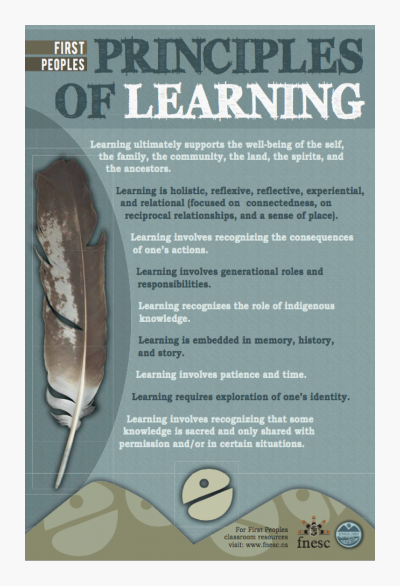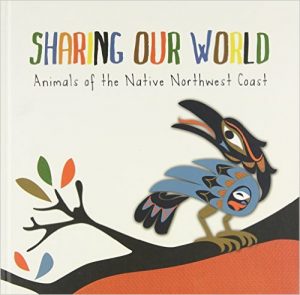Throughout my practicum, I integrated Indigenous ways of knowing into every unit, rather than creating a separate unit. Engaging with the First Peoples’ Principles of Knowing throughout each unit helps students to understand our shared histories as they learn through a sense of connectedness and embrace reconciliation.
Source: First Nations Education Steering Committee (FNESC) 2016.
I provided a sample lesson plan using the storybook, “Sharing Our World: Animals of the Native Northwest Coast”. This lesson connected with our Language Arts project where the students researched an animal that originates in Canada for their written reports. This is a fantastic storybook to introduce primary students to various Aboriginal communities in B.C.!
This map of the Northwest Coast taken from the First Peoples’ Languages Map website (http://maps.fphlcc.ca/) is a very useful resource for students to better understand where each community is located. Educators can even enlarge the map and hang it up in class during the year! The students enjoyed questioning how far or how close each community is located in relation to Vancouver!
Lesson Plan
| Subject Area(s) and Date:
May 16, 2016 Storytime |
Materials:
– Sharing Our World storybook – Projector, VGA adaptor, laptop, First Peoples Languages Map |
Critical Question/s: how can we connect and have special relationships with animals and the natural world?
Relevant Previous Learning/Experiences: connecting to animal reports on different animals in Canada, experiences with connecting with animals
|
|||
| Start Time: 1:05
Finish Time: 1:40 |
SWBATs:
– Make connections between animals, humans, our environment – Form ideas about how to take care of animals
|
||||
| Intellectual Demands: Describing, Classifying, Forming Principles, Sequencing, Evaluating, Choosing | |||||
| Assessment:
|
– Observe how students are following along with the story and the class discussions
|
||||
|
Part of lesson |
Min. |
Teacher Activity |
Specific Adaptations |
Student Activity |
|
| Introduction:
|
5
|
– Introduce the plan: read aloud Sharing Our World, think, pair, share, look at the First Peoples Languages Map together
– Discuss how this story connects with our animal reports and tell class this story is made by different artists and it has no beginning, middle, end sequence
|
Students will follow along with introduction | ||
| Body | 15 | – Before read aloud, ask students to think of what the animals mean to certain people (to the artists and their Aboriginal communities: Nuxalk, Coast Salish, Haisla, etc.)
– Read aloud Sharing Our World – Point out whose ancestors? What does ancestors mean? – After finishing story: ask students to ask partner if they have a connection with an animal and why – 2 minutes think, pair, share – Discuss our personal connections to animals |
– Following along with read-aloud
– Think, pair, share: do you have a connection with an animal and why?
|
||
| Closure | 10-15 | – Pull up the First Peoples Languages Map of different Aboriginal communities on the Northwest Coast
– Point out where Vancouver is on the map and where the artists’ communities are on the map: Nuxalk, Coast Salish, Kwakwaka’wakw, Haisla, Heilstuk, Haida, Tsimshian |
– Whole class will look at the First Peoples Languages Map together and focus on where these different communities are, where we are located in relation to these communities
|
||


